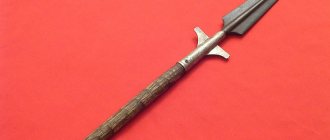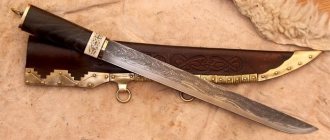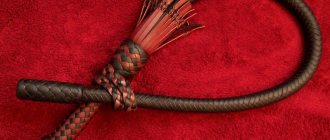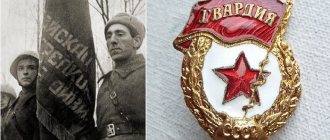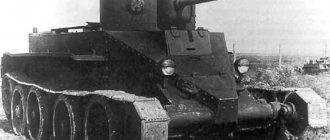The knight's main weapon was not a sword, but a spear. It was with a spear that the first blow was struck in battle; the “spear” was the name given to the knight’s battle retinue, his detachment. Therefore, the spear was the main weapon during the knightly tournament.
It, like knightly armor, has gone through a considerable path of evolution. Its original form, a simple pole with a sharp tip, has changed to a complex, sometimes hollow, structure equipped with protection for the hand.
That’s what we’ll talk about today, opening the new “Knight’s Tournament” cycle. This does not mean that we are closing the History of the Sword series. Against. We will continue them further, in parallel with the Knight Tournament series.
The importance of the spear in battles was extremely great, because the knight usually struck the first blow in battle with a spear. Accordingly, this condition was carried over to tournaments.
It is interesting that in England and France in the 12th-15th centuries the tournament was sometimes called just that - “heystiljud”, that is, “game with a spear”. But this applied only to those battles where the spear served as a weapon.
Such fights took place both on horseback and on foot. However, we will have to narrow the topic, otherwise this article may turn into a thick book. To prevent this from happening, we will limit ourselves to the spears with which the knights fought on horseback.
Performance characteristics of the tournament spear
Only in the 13th century did they begin to use a special, “humanized” spear in tournaments, and therefore it began to be divided into the spear of war and the spear of peace. The difference between them was the shape of the tip.
At the spear of war, it was sharp, which allowed the participants in the duel to fully sip on the thrill. The spear of peace has a special shape, in the form of a crown with 3-4 teeth, which is why it was called coronel.
Its advantage was in distributing the impact force over its entire area. Thus, tournaments became increasingly safer for their participants, although death was still their companion.
Throughout the history of knightly tournaments, the spear will undergo many special changes, and when the tournaments themselves turn into a sports competition, it will become an excellent sports equipment. By this time, the spear would be complex, made from several parts assembled with glue.
As you can see, it is as far from a “stick with a tip” as a motorcycle is from a scooter. I’ll tell you now what parts it consisted of.
Spears in different countries
In China, polearms were used for three thousand years, from the Shang Dynasty to the reign of the Qing Dynasty. Ji spears were carried by Chinese infantrymen and horsemen. Its varieties are qinglong ji with one concave sickle-shaped blade and fantan ji with two blades on either side of the tip.
South American Indians preferred bows and darts. But the Araucan warriors realized that with long pikes they could repel the attacks of the Spanish cavalry.
The Zulu tribes of South and Southeast Africa used the assegai, a two-meter shaft with a leaf-shaped iron tip. The indigenous peoples of Oceania built a spear thrower - a stick or plank with a groove and a stop for throwing a weapon over a long distance.
Shaft
The thickness of the spear, or rather, the thickness of its shaft, was different in different centuries. For the 12th-13th centuries, a fairly light spear with a diameter of no more than 6.5 centimeters at its widest point was considered normal. For comparison, the handle of a common shovel has a diameter of 4 centimeters.
In the chronicles you can find many references to tournaments in which the poet, politician and knight Ulrich von Lichtenstein (1200-1275) participated. So, during the tournament, each of his squires kept his master’s spare spears - and in bundles of three. This means that even such thick shafts the knights managed to break against each other with enviable consistency.
On the left is Ulrich von Lichtenstein on a miniature of the Manes Codex (XIV century), on the right is a detail of the tapestry “Manius Curius Dentatus Refusing the Gifts of the Samnites” (XVI century), on which spears tied together are clearly visible.
But time passed and the spears developed. By the 15th century, their diameter “played” already from 5 to 15 cm, most often amounting to 9-10 cm. The length of the spear was from 3 to 3.7 meters.
The shaft was made of soft wood (ash, aspen), usually round in cross-section. Some tournament spears were grooved and sometimes even hollow to make them break more easily.
On top they were usually intricately painted in the coat of arms colors of the owner. It is interesting that, depending on the type of tournament competition, spears were used that had different thicknesses and lengths, as well as different tips.
Types of weapons
A spear is a type of piercing or piercing-cutting weapon, consisting of a long shaft and a sharp tip. It was intended for throwing or close combat in various military units.
Infantry Spears
In the Macedonian, Hellenic, ancient Roman and Slavic armies, weapons were called and looked differently. Several types were used in battle:
- one-handed - short, carried by warriors in the front rows with shields;
- sarissas - 2-6 meters long, carried from the third row, used for throwing and in close combat;
- pilums - the shaft and the pyramidal tip made of soft iron were the same length, carried by light infantry warriors and legionnaires in the ancient Roman army;
- sulitsa (darts, jerids) - meter-long throwing weapons, worn in a quiver, used in Rus', medieval Europe, and the Middle East.
The most famous type of long spear is the pike. Their tips, 12 centimeters long, had 3-4 edges with longitudinal grooves and fullers.
Cavalry
The horsemen of Greece and Macedonia fought with short spears with the center of gravity shifted to the shaft. Sarissas were also adapted for cavalry, deliberately equipping them with a brittle shaft. Otherwise, the heavy weapon would drag the rider along with the horse. Cavalry pikes weighed an average of three kilograms. The length of the shaft did not exceed 3.5 meters.
The Polish winged hussars carried weapons with a hollow shaft from the tip to the middle, a rounded guard and a shaft end made of heavy wood. In Western Europe, knights struck first with a 4.4-meter-long spear and then fought with swords.
In Rus', local cavalry performed with maneuverable spears weighing 1.5 kilograms and 2.5 meters long.
For hunting
The length of the shaft of hunting weapons was selected so as to keep the animal at a safe distance, and the tip was selected to crowd it. These include:
- harpoon - a throwing weapon with a jagged tip for hunting whales and sea animals;
- trident - a long shaft with a three-pronged tip and hooks at the ends of the teeth for catching large fish;
- boar spear - a two-meter shaft with a tip and crossbar, a traditional attribute of a German huntsman;
- slingshot - a Russian device with a crossbar under the tip for bear hunting.
Hunting was considered a pastime for aristocrats, so the guns were decorated with precious trim.
For security
Spear-bearing guards appeared in the first major cities. They guarded the city gates, palaces, and patrolled the streets. The guards used devices that originated from the berdysh, an ax with a sickle-shaped blade. They were equipped with a tip with a double-sided sharpening and were also called horns.
Ancient Roman bodyguards wore lightweight lancea spears 2.5 meters long with a leaf-shaped elongated tip. Lanciarii accompanied generals, sometimes senators.
Spear as a flagpole
In Ancient Egypt, figures of gods and ribbons were attached to the end of the pike. Warriors of Genghis Khan's army and Ukrainian Cossacks tied a horsehair bunchuk to a shaft. With the help of banners tied to a pole, warriors and military leaders gave signals during battle. The Romans specially attached a crossbar under the tip with a sign on which the name of the military unit was indicated.
Later, a tradition arose of equipping the top of the flagpole with a tip. The banners of Imperial Russia resembled pikes. In the USSR, the tops of flags were stylized in the form of the tip of a spear.
Hand protection
On tournament spears of the developed Middle Ages, the handle was specially distinguished. It was separated from the rest of the shaft by limiting ridges on both sides.
To protect the hand, a special funnel-shaped guard was placed in front of the handle. It was called nodus or vamplate. It was equipped with a hook from the inside, which made it easier to control the spear, and was also lined with felt.
Here we have one example of a spear with a nodus. It dates back to the 16th century and reaches a length of 4.25 meters. Nodus has the shape of a truncated cone with corrugated edges, and does not exceed 31 centimeters in diameter.
The size of the nodus depended on the type of fights. For some, it was about 15-16 cm in diameter, while for others it already covered the knight’s entire right hand, from wrist to shoulder.
However, the presence of a nodus was not a prerequisite for a tournament spear. Some examples made do with the front limiting roller of the handle, and in this case it was made much larger than the rear one.
It is clear that such a colossus also had to be held in the hand - not only while prancing in front of the ladies, but also at the moment when the knight knocked his opponent out of the saddle. To do this, they resorted to special tricks.
Efficiency
The piercing power of the pilum was impressive. The spear pierced the shields and armor of the warriors. British historian Connolly decided to test modern analogues of ancient weapons in the early 2000s. Three spear sizes were selected for testing:
- heavy with large diameter tip 1.28 kg;
- heavy with pyramidal tip 1.7 kg;
- light dart 1.1 kg.
When range tests were carried out, the first spear reached a maximum value of 34.8 m, the second - 33.7 m, and the third - 54.5 m.
The weapon was also tested for its ability to penetrate material. The target was a plywood plate 1.1 cm thick. A light dart pierced the plywood, but did not pierce it; its metal part was bent with a hook. The first type of spear also pierced the target without penetrating. But the second version of the pilum pierced the plywood, and pulling out the tip was problematic, since the edges of the hole were deformed.
Spear hook
Behind the handle there was a heavy metal ring (grappa), which rested against the steel spear hook on the right side of the cuirass, preventing the spear from slipping and distributing the recoil force over the entire breastplate.
In the 15th century, the spear hook became a mandatory element of tournament knightly armor, although it is said that it arose around 1325. Initially, it was lined with felt, but over time they began to make linings of wood or lead on the spear hook. Accordingly, the grappa acquired small, blunt spikes that easily fit into the linings, which ensured an even more reliable grip between the spear and the knight.
Meaning in culture
In myths, peaks are presented as an attribute of the beginning. The Scandinavian god Odin started the war by throwing the spear Gungnir. The lightning spear is a symbol of the ancient Mediterranean thunder god Baal. The peak of the Indian god of war Indra is a symbol of victory. In the culture of different nations, a spear serves as a weapon of retaliation, strength and power.
Other famous weapons:
- trident of the Greek god Poseidon;
- spears of the prophet Muhammad Al-Monsari and Al-Monsawi;
- King Arthur's Rongowennan;
- the spear of St. George the Victorious piercing a serpent.
Cervantes' Don Quixote attacked the mills, armed with a knight's pike. Herman Melville in his novel Moby Dick describes the hunt of whalers with harpoons.
According to Slavic myth, the spear of Julius Caesar was stuck into a sacred pillar in the city of Julina, which sank under the waters of the Baltic Sea. The Kremlin Armory houses the tip of the spear of Prince Boris Alexandrovich of Tver, which Tsar Ivan Vasilyevich brought as a trophy.
Tournament optimal
Only from the 14th century did special tournament armor begin to stand out. At first, this trend was not too noticeable; the armor that was in use was strengthened.
If you look closely at the topfhelm - a bucket-shaped helmet of the noble family of Prankkhov (mid-14th century), you will see that the left side of the helmet is more protected, the viewing slot is narrower, and the inside of the helmet itself is equipped with a felt lining.
After half a century or so, concern for the safety of the knight in tournament conditions finally came to the fore. By the 15th century, in medieval society, tournaments were already perceived as festivals, and fights as sports.
Hence the division of armor into combat armor, in which you can run, jump, gallop and climb walls, and tournament armor. Which are not practical in a real fight, but in a tournament they are just what the doctor ordered. And since, in German, “to stab” is stechen, the fights with spears were called “gestech”, and the armor for participation in them was called stechzeug. Here he is:
During the time that the shtekhtsoig was in use, it underwent changes. At the same time, different countries fought a little differently, so they made adjustments to the defense. The biggest differences - we will definitely talk about them in a special article - were between the German and Italian Stechtsoig. Regarding the tournament spear, the difference was small and consisted of the following.
The Germans fixed the spear with the help of a powerful tournament hook, which I have already talked about. The Italians, in turn, used lighter spears in clashes, and a leather glass covered with cloth was enough to support them. It was riveted on the right side of the cuirass, in the area of the belt, and before the start of the clash, a spear was inserted into it.
By the beginning of the 15th century, a new type of equestrian spear duel appeared in Germany, which soon became very popular. It was called rennen, which literally means simply “horse racing.”
Behind such a harmless name was hidden a gambling competition in which the knights repeated their collisions until one of them was knocked out of the saddle. A kind of marathon in which only the most resilient would win.
The spear that was used in the mounted attack in Rennen was usually lighter than the one that was used in the previous variants of the charge. It was made of soft wood, reached 4 meters in length, and with a diameter of 7 cm weighed about 14 kg.
At the same time, its tip was sharp, which means that the rennen participants had enough adrenaline. Therefore, Rennen gave birth to new, more suitable armor for him. It largely took its form from the Gothic armor of the 15th century and was called rennzoig - armor for participation in the rennen.
Rennzoig armor from the Metropolitan Museum of Art in New York. Both were made in 1580–90 in Germany, possibly Dresden. The weight of the one on the left is 41.5 kg, the one on the right is 29.5 kg.
Technique of use
The legionnaires threw spears from a certain distance, while changing the march to running. From what distance the pilums were thrown is a controversial issue. It must be assumed that the legionnaires first threw spears, then attacked the enemy with swords. Although experiments have established that pilums are capable of covering a distance of 30 m, they were most likely thrown from a shorter distance - 10-18 m. In this case, the spear did not lose its penetrating power, and the legionnaire had enough time to take the sword out of its sheath and run up to the enemy.
The pilums did not always cause injury, but often got stuck in exposed shields. The enemy could not pull the bent metal tip out of the shield, and it was also impossible to chop it off; as a result, the protective device became inconvenient, and it was necessary to throw it, “baring it” in front of the attacker. The legionnaire, having reached the enemy, could grab the shaft, pull it down or to the side, gaining access to the enemy body.
There are three assumptions about how the Romans could throw the pilum:
- All the legionnaires threw spears together. The advantage of this method is a significant concentration of attack on a narrow front line. The downside is the high probability of injury to the legionnaires in front, since the distance between the first and last rows of Roman soldiers was approximately 9 m.
- Rows or even parts of rows threw pilums in turn after approaching the enemy at the optimal distance.
- Legionnaires of the 1st-3rd row were the first to throw spears. The rest used weapons when they found themselves in the thick of battle, and, if necessary, passed them on to their comrades.
Like a tank turret
Initially, the spear in the tournament was held only with the hand, sometimes pressing it to the thigh. But in the 12th century, the stakes on a spear strike from a horse, which in itself was terrible, were raised. The main task was the ramming blow with a spear, when the speed and mass of the horse were combined together.
Therefore, they began to clamp the spear under the arm, so that the rider turned into a kind of tank turret. His task was to accurately aim and hold the spear at the moment of impact.
This method of holding a spear can already be observed in some knights depicted on the famous carpet from Bayeux (1077-1085). But then this was the exception rather than the rule.
In the next century, both variants of holding a spear were sometimes mixed, although not often. So, during the duel in Tarvis (13th century), the knights Reinprecht von Murek and the already familiar Ulrich von Lichtenstein came together in battle. One took the spear under the arm, the most common technique, the other held the spear low to the hip.
But no matter how the knights held their spears, the most beautiful battle was considered to be one in which both participants broke them without falling out of their saddles.
Now let's see what it all looked like in reality.
In the video that I want to show you, the filming is carried out from several cameras, two of which are installed directly on the spear. One films back and shows us the knight at the moment when he strikes his opponent. The second one removes this blow itself and its consequences.
In short, you have a unique opportunity, without leaving your computer, to get in the saddle and see the world through the eyes of a knight. Or rather, his spears.
Story
Translated from Latin, “pilum” means “pestle,” although visually the pounding tool can hardly be called similar to a spear. According to another version, the name of the weapon comes from the nickname of the ancient Romans, they were called “pilumnoe poploe”, which roughly translates as “spear people”.
It is not known when and by whom the pilum was invented. There are several versions from whom the Romans borrowed weapons: from the Sabines, Iberians or Samnites, but most likely from the Etruscans. The spear became an important part of the equipment of Roman legionaries at the beginning of the 3rd century BC. e. Initially it was used by infantry, and after the formation of the republican legions and until 27 BC. e. The pilum was used by light legionnaires velites and heavily armed infantrymen hastati. Around 100 BC e. the military leader Marius gave the pilum the status of a mandatory weapon for every legionnaire.
Gradually, the pilum was replaced by the lightweight spear spiculum. Although some historians believe that these are the same weapon. When the Roman Empire collapsed, legionary infantrymen disappeared, and then the history of pilums ended; heavy cavalrymen with spears of considerable length became the key figures on the battlefields.
Spear tongue
Let's not forget that the era of chivalry is an era of ceremonies, lofty words and bright deeds. For example, Ulrich von Lichtenstein, during his fights, demanded that the knights he defeated bow in honor of the ladies in all four directions of the world. The knight who broke his spear against Ulrich von Lichtenstein received a gold ring to give to his lady.
The tournament itself is a real treasure trove for those scientists who study the language of symbols. It is clear that the spear also had the fate of being, in addition to a weapon, part of medieval symbolism. According to heraldic rules, the spear on the coat of arms symbolized knightly service and piety.
It was piety that forced the knight, who was knocking the enemy out of the saddle, to immediately throw his spear, stop and raise his right hand up.
In addition, the spear was an important attribute of an honorary knight - a very special and necessary figure in the tournament. His persona was chosen by the ladies, and the honorary knight did not fight. A special role awaited him.
Firstly, he had to be on the lists for the entire knightly tournament - in armor and on horseback. At the same time, his helmet was far away - on the ladies' platform, where it was solemnly held on a piece of a spear.
And secondly, the honorary knight was on the lists with another spear, at the end of which a long white veil was attached. It was called the “veil of favor” because by touching it the honorary knight had every right to stop the battle at any time at his discretion.
So the tournament spear was a special weapon for the knight. They valued him, they praised him, but most importantly, they achieved victories, sometimes difficult ones. It was thanks to these victories, and therefore thanks to the tournament spear, that stars of the first magnitude were lit in the Middle Ages, whose names have been known for many centuries.
And finally, one more video on the topic:
Symbolism
The spear symbolizes military valor and masculinity. In Scandinavian, Chinese and Indian mythology, this is an attribute of the gods, and since the Bronze Age - an attribute of military power and leaders. Tips made of gold and silver were decorated with ornaments.
The most famous symbol of an unjust trial is the “spear of Fate” with which the warrior Longinus pierced Christ crucified on the cross. Also, a polearm means a tree branch and a direction indicator. The Spanish missionary and philosopher Raymond Lull believed that the spear symbolizes the high morality of the knight.
Throwing fight
Battles during the Roman Empire usually took place with pauses, when opponents went to the rear to restore strength and reserves of weapons. Julius Caesar described a similar battle using throwing weapons. We are talking about a clash with the army of Afranius at the Spanish Ilerda in 49 BC. e.
The opponents stood on a hill where the rise was no wider than 150 m. Caesar's legion stopped at the foot of the hill and came under fire, which lasted 5 hours. When the throwing weapons on both sides ran out, the Roman legionaries attacked the enemies, rushing up the hill with their swords, forcing the enemy army to retreat.
Caesar's Spanish legion was fully equipped in terms of weapons. Before the battle, the legionnaires had about 10 thousand pilums. To use up the spears in the specified time, the Romans had to throw 2 thousand units per hour, and for each front meter there were 13 units.
If you believe the emperor’s records, the number of pilums used managed to kill 200 enemy soldiers and wound 4-5 times more. That is, approximately 10% of the fired pilums hit the target, and this is a very good result for those times. You also need to take into account that the enemies were protected by shields.
A few interesting facts...
Unlike arrows, darts were not equipped with feathers. The exception in this regard was the Roman and Byzantine “plumbates”. The word “plumbata” from Latin can be translated as “piglet”. Darts of this type were only 45 cm long and were carried in groups of 5 in pockets on the inside of the legionnaire's shield. The lead weight shifted the center of gravity to the very tip, so the short shaft had to be equipped with feathers for stabilization. There were both light (0.2 kg) and armor-piercing (over 0.7 kg) “plumbats”. They rushed at a distance of up to 60m.
Author - Melfis K.
When writing the article, the following sources were used: Encyclopedia of Edged Weapons, Igor Kray’s article “Light Infantry of Antiquity”, an article from the portal www.rol.in.ua and a number of others, the names of which have not been preserved by history.

